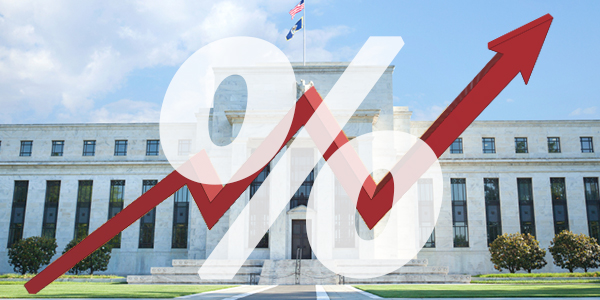Why This Interest Rate Cycle Could be a Doozy (and the Sectors to Own for It)

|
|
The countdown to Wednesday’s Federal Reserve interest rate hike is on! I trust you’ll be as well-prepared as anyone for it, given the advanced warning we’ve given you at Weiss Ratings. But here is some very important, last-minute advice to keep in mind:
This isn’t the FIRST hike of the cycle, nor will it likely be the LAST.
If the Fed does raise rates from the current 0.5%-0.75% range to 0.75%-1% on March 15, it’ll be the third such move. Yet history shows that once the Fed starts raising rates, it usually does so for a longer period of time – and by a larger amount – than most appreciate or expect initially.
Just take a look at this table. It shows the details on every one of the last four major Fed rate-hiking cycles:

You can see that the average nadir, or length of time rates hung out around their lows before the hiking cycle started, was 12.3 months. The average length of those four cycles was 24.8 months. And the average increase in rates was 660 basis points, or 6.6 percentage points. Even stripping out the 1,525 basis point “mega-cycle” from the Carter and Reagan years, you get an average increase of around 370 basis points.
This time around, the Fed slashed rates to 0% in December 2008 … and left them there all the way until December 2015. That’s a mind-boggling seven years! That era was also accompanied by the greatest wave of global interest rate cuts, negative rates overseas, and worldwide QE in the history of mankind — more than $12 TRILLION of it, to be precise.
So even if we get a third, 25-point hike on Wednesday, it should be just one of many moves. More than four decades of interest rate history suggest anywhere from 295 more basis points (if you ignore the Carter/Regan cycle) to 585 points (if you take the average of all cycles) worth of increases could be coming down the pike.
You can both cope with, and profit from, rising rates in many different ways. My brand new educational course, How to Pile Up Profits from the Greatest Interest Rate Cycle in 5,000 Years, is chock full of details. So be sure to click here to check it out.
But in the meantime, what do rising rates mean for various stock market sectors? Well, let’s take a look at how different sectors fared in the last rate-hiking cycle that ran from 2004 through 2006.
Long-term interest rates actually began rising several weeks before the Fed started hiking short-term rates back then. That’s typical, because bond investors tend to anticipate cycle changes, and the Fed tends to follow their lead. So I decided to measure sector performance from mid-March 2004 (when long-term rates began to rise) through late-June 2006 (when the rise stopped).
The Energy Select Sector SPDR Fund (XLE, Rated “C”) was the standout performer, delivering a total return (including dividends) of around 94% during that time frame. That compared to only 10% for the S&P 500. The Industrial Select Sector SPDR Fund (XLI, Rated “B”) returned just over 32%, while the Materials Select Sector SPDR Fund (XLB, Rated “B-”) rose by almost 28%.
The Financial Select Sector SPDR Fund (XLF, Rated “B”) also outperformed, though not as much as those sectors. Its gain came to 14%. But I expect much better results this time around. That’s because bank balance sheets are in far better shape, deregulation is going to take the shackles off their lending and investing activities, and the shape of the interest rate curve should be much more favorable.
One interesting footnote: The traditionally interest rate sensitive iShares U.S. Real Estate ETF (IYR, Rated “C+”) also delivered a hefty 44% return in 2004-2006. But it’s pretty obvious why. We were experiencing the greatest real estate mania our country has ever seen, and the bubble in REIT shares didn’t start popping until early 2007.
Bottom line: If you’re looking for stocks that can outperform in a rising-rate environment, focus your efforts in sectors like financials, materials, industrials, and energy. And whatever you do, don’t underestimate the potential duration or magnitude of this interest rate cycle. It could be a doozy!
Until next time,
Mike
Stocks & Sectors Edition , by Mike Larson, Senior Analyst Mike Larson is a Senior Analyst for Weiss Ratings. A graduate of Boston University, Mike Larson formerly worked at Bankrate.com and Bloomberg News, and is regularly featured on CNBC, CNN, Fox Business News and Bloomberg Television as well as many national radio programs. Due to the astonishing accuracy of his forecasts and warnings, Mike Larson is often quoted by the Washington Post, Chicago Tribune, As-sociated Press, Reuters, CNNMoney and many others. |



